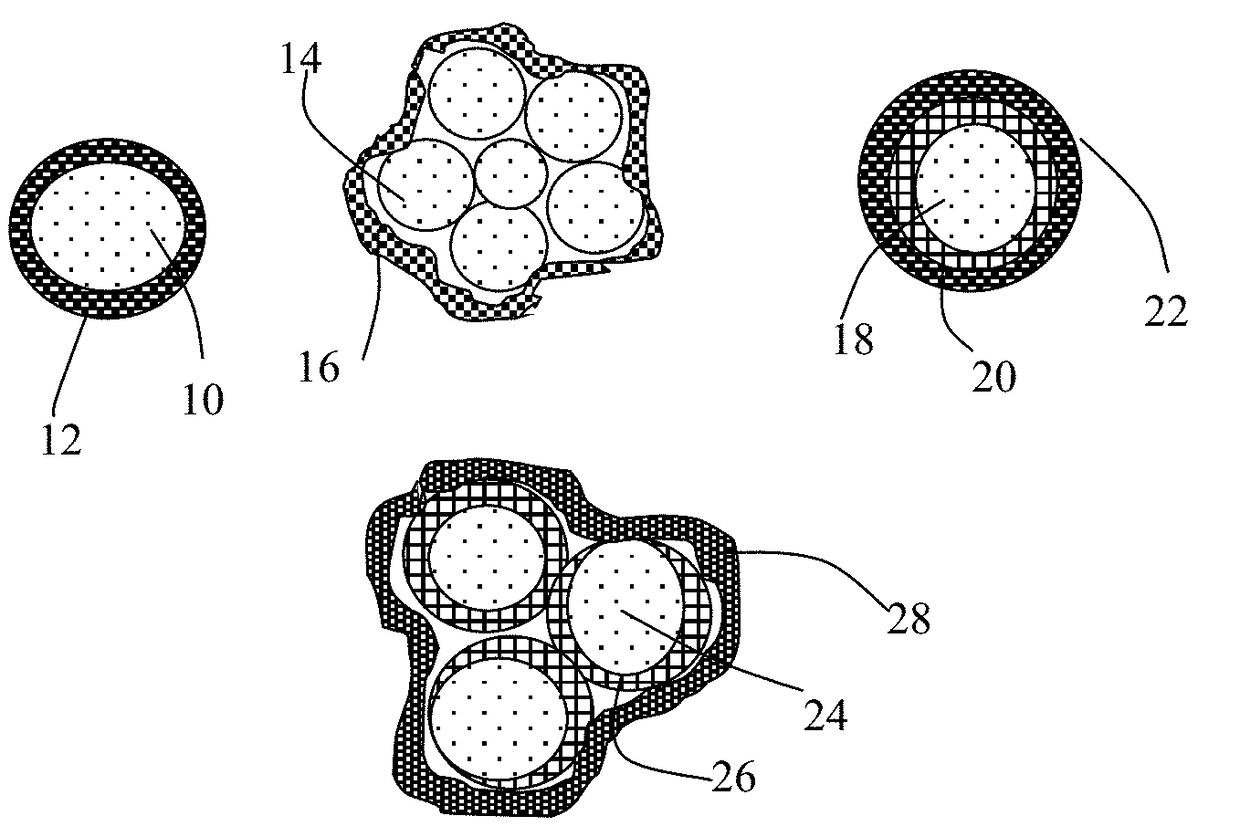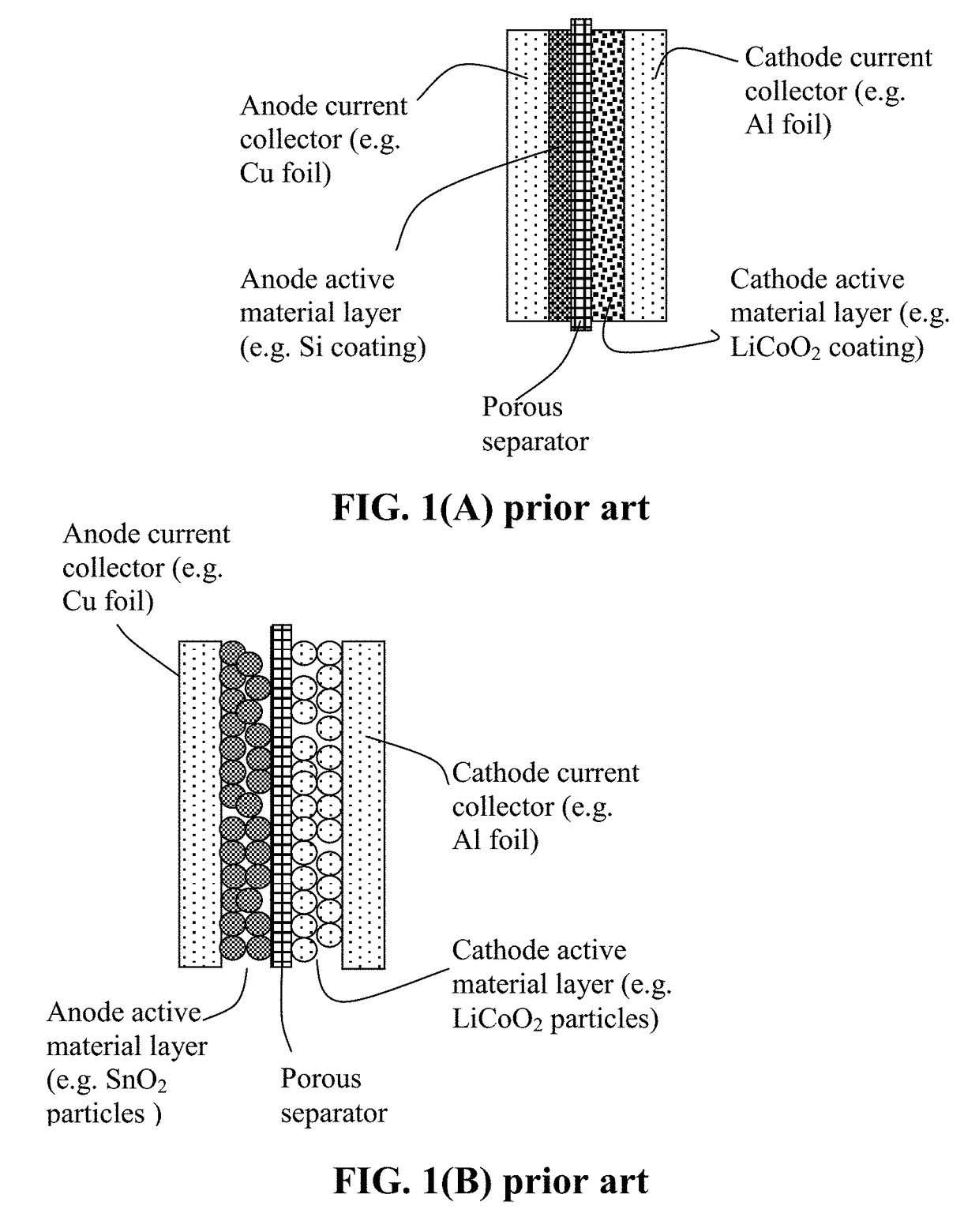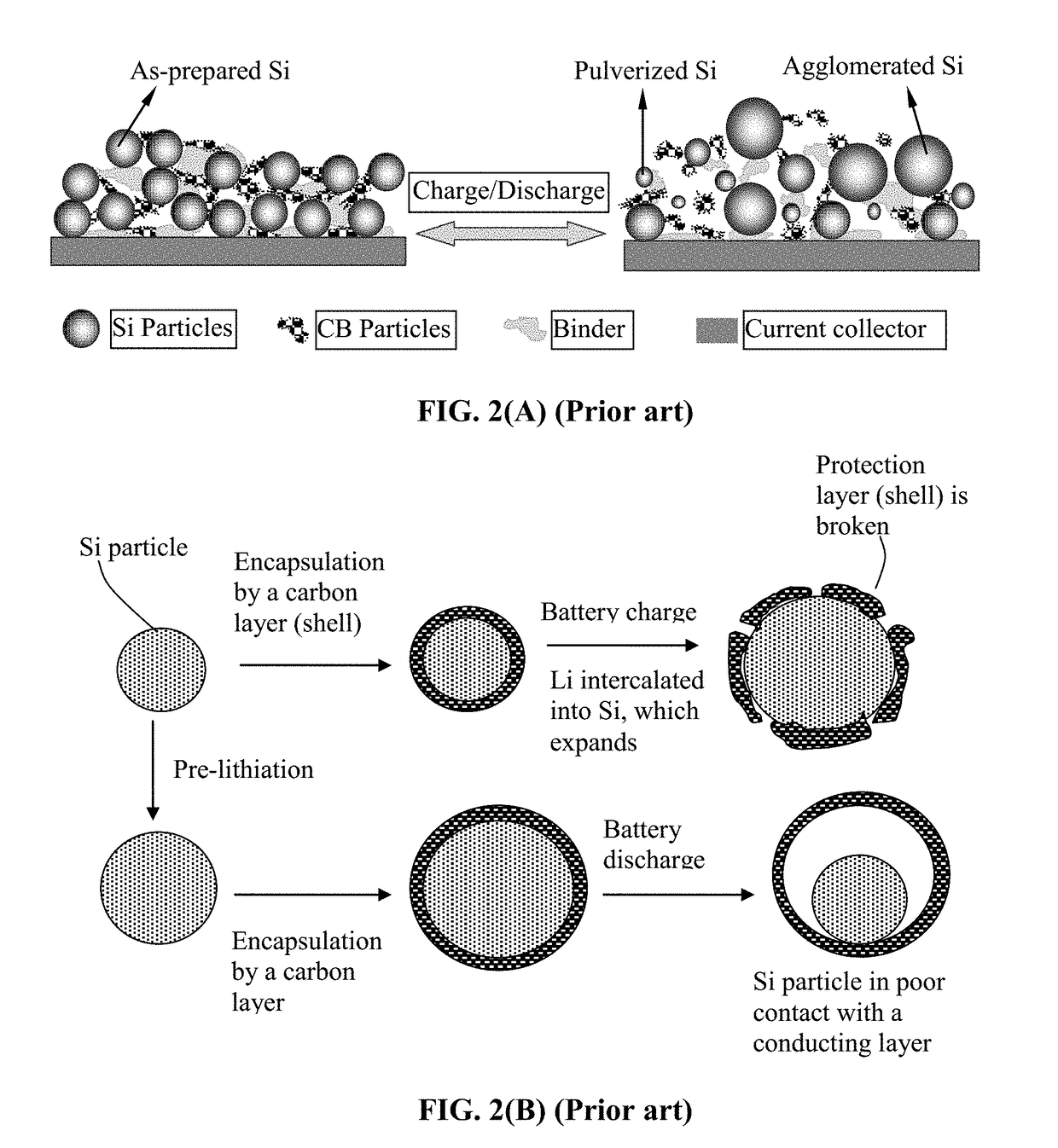Encapsulated Anode Active Material Particles, Lithium Secondary Batteries Containing Same, and Method of Manufacturing
a lithium secondary battery and active material technology, applied in the field of rechargeable lithium batteries, can solve the problems of severe pulverization (fragmentation of alloy particles), loss of contacts between active material particles and conductive additives, etc., to improve lithium ion conductivity to a polymer
- Summary
- Abstract
- Description
- Claims
- Application Information
AI Technical Summary
Benefits of technology
Problems solved by technology
Method used
Image
Examples
example 2
ticity Polymer-Encapsulated Tin Oxide Particulates
[0114]Tin oxide (SnO2) nano particles were obtained by the controlled hydrolysis of SnCl4.5H2O with NaOH using the following procedure: SnCl4.5H2O (0.95 g, 2.7 m-mol) and NaOH (0.212 g, 5.3 m-mol) were dissolved in 50 mL of distilled water each. The NaOH solution was added drop-wise under vigorous stirring to the tin chloride solution at a rate of 1 mL / min. This solution was homogenized by sonication for 5 m in. Subsequently, the resulting hydrosol was reacted with H2SO4. To this mixed solution, few drops of 0.1 M of H2SO4 were added to flocculate the product. The precipitated solid was collected by centrifugation, washed with water and ethanol, and dried in vacuum. The dried product, SnO2 nano particles, was heat-treated at 400° C. for 2 h under Ar atmosphere.
[0115]The high-elasticity polymer for encapsulation of SnO2 nano particles was based on ultra-high molecular weight polyacrylonitrile (UHMW PAN). UHMW PAN (0.3 g) was dissolved...
example 3
Nano Particles Encapsulated by an UHMW PPO-Based High-Elasticity Polymer
[0118]For encapsulation of Sn nano particles, a procedure similar to that described in Example 1 was followed. For comparison, some amount of Sn nano particles was encapsulated by a carbon shell. Carbon encapsulation is well-known in the art. Un-protected Sn nano particles from the same batch were also investigated to determine and compare the cycling behaviors of the lithium-ion batteries containing these different types of particulates or bare particles as the anode active material.
[0119]Shown in FIG. 7 are the discharge capacity curves of three coin cells having three different types of Sn particulates (protected) or particles (un-protected) as the anode active material: high-elasticity UHMW PPO polymer-encapsulated Sn particles, carbon-encapsulated Sn particles, and un-protected Sn particles. These results have clearly demonstrated that carbon encapsulation is not effective in providing the necessary protect...
example 4
re-Based Particulates Protected by a High-Elasticity Polymer
[0120]Si nano particles and Si nanowires Si nano particles are available from Angstron Energy Co. (Dayton, Ohio). Si nanowires, mixtures of Si and carbon, and their graphene sheet-embraced versions were further embraced with the UHMW PAN polymer.
[0121]Some Si nanowires were coated with a layer of amorphous carbon and then encapsulated with UHMW PAN. For comparison purposes, Si nanowires unprotected and those protected by carbon coating (but no polymer encapsulation), respectively, were also prepared and implemented in a separate lithium-ion cell. In all four cells, approximately 25-30% of graphite particles were mixed with the protected or unprotected Si nanowires (SiNW), along with 5% binder resin, to make an anode electrode. The cycling behaviors of these 4 cells are shown in FIG. 8, which indicates that UHMW polymer encapsulation of Si nanowires, with or without carbon coating, provides the most stable cycling response. ...
PUM
| Property | Measurement | Unit |
|---|---|---|
| thickness | aaaaa | aaaaa |
| lithium ion conductivity | aaaaa | aaaaa |
| tensile strain | aaaaa | aaaaa |
Abstract
Description
Claims
Application Information
 Login to View More
Login to View More - R&D
- Intellectual Property
- Life Sciences
- Materials
- Tech Scout
- Unparalleled Data Quality
- Higher Quality Content
- 60% Fewer Hallucinations
Browse by: Latest US Patents, China's latest patents, Technical Efficacy Thesaurus, Application Domain, Technology Topic, Popular Technical Reports.
© 2025 PatSnap. All rights reserved.Legal|Privacy policy|Modern Slavery Act Transparency Statement|Sitemap|About US| Contact US: help@patsnap.com



